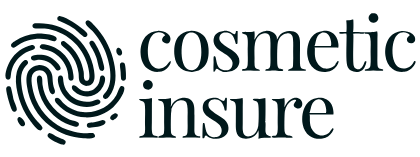7 Things You’ve Got to Know About Lemon Bottle!

Introduction In the ever-evolving world of cosmetic enhancements, Lemon Bottle fat-dissolving injections have emerged as a revolutionary option for those seeking non-surgical fat reduction. These injections promise a more contoured physique without the need for invasive procedures or lengthy recovery times. As interest in these treatments grows, it’s crucial to understand what Lemon Bottle injections entail, how they work, and what you can expect. Here are seven essential things you need to know about Lemon Bottle fat-dissolving injections. 1. What Are Lemon Bottle Fat Dissolving Injections? Lemon Bottle fat-dissolving injections are a cosmetic treatment designed to target and reduce small, stubborn pockets of fat. Unlike traditional liposuction, which involves surgical removal of fat cells, these injections use a special formula to break down fat cells in specific areas of the body. The primary ingredient in these injections is deoxycholic acid, a naturally occurring molecule in the body that aids in the breakdown and absorption of dietary fat. 2. How Do They Work? The mechanism behind Lemon Bottle injections involves injecting the deoxycholic acid solution directly into the fatty tissue. Once injected, the solution works to dissolve the fat cells, which are then naturally metabolised and eliminated by the body. This process gradually reduces the thickness of the fat layer in the treated area, resulting in a more sculpted and toned appearance. It’s a non-surgical alternative to liposuction, offering a less invasive option for fat reduction. 3. Treatment Areas Lemon Bottle injections are particularly effective for small areas of fat that are resistant to diet and exercise. Common treatment areas include the double chin, upper arms, abdomen, flanks, thighs, and the bra bulge. It’s important to note that these injections are not intended for large-scale fat reduction but rather for fine-tuning and contouring specific areas where fat persists despite a healthy lifestyle. 4. The Procedure The procedure for Lemon Bottle injections is relatively straightforward. After an initial consultation to determine suitability, the treatment area is marked and cleaned. A local anaesthetic may be applied to minimise discomfort. The deoxycholic acid solution is then injected using a fine needle. The number of injections and sessions required varies depending on the size of the treatment area and the desired results. Each session typically lasts between 15 to 30 minutes, making it a convenient option for those with busy schedules. 5. What to Expect Post-Treatment Post-treatment, patients can expect some swelling, bruising, and redness in the treated area. These side effects are usually mild and resolve within a few days. It’s important to follow the aftercare instructions provided by the practitioner to ensure optimal results and minimise any potential complications. Most patients can return to their normal activities immediately after the treatment, though it’s advisable to avoid strenuous exercise for a few days. 6. Results and Effectiveness The results of Lemon Bottle injections are not immediate, as the body needs time to metabolise and eliminate the dissolved fat cells. Patients typically begin to see improvements within a few weeks, with full results becoming apparent after a few months. The effectiveness of the treatment varies from person to person, but many report significant reductions in fat and improved body contours. Multiple sessions may be required to achieve the desired outcome. 7. Considerations and Safety While Lemon Bottle injections are generally considered safe, they may not be suitable for everyone. Ideal candidates are those who are close to their ideal weight but have stubborn fat deposits that are resistant to diet and exercise. Individuals with certain medical conditions or those who are pregnant or breastfeeding should avoid this treatment. It’s crucial to choose a qualified and experienced practitioner to perform the injections, as improper technique can lead to complications. Conclusion Lemon Bottle fat-dissolving injections offer an exciting, non-surgical option for those looking to refine their body contours and tackle stubborn fat deposits. By understanding how these injections work, what to expect during and after treatment, and the potential results, you can make an informed decision about whether this cosmetic procedure is right for you. Always consult with a qualified healthcare provider to discuss your goals and determine the best approach for achieving your desired look.
Profhilo Structura: The New Innovation in Facial Aesthetics
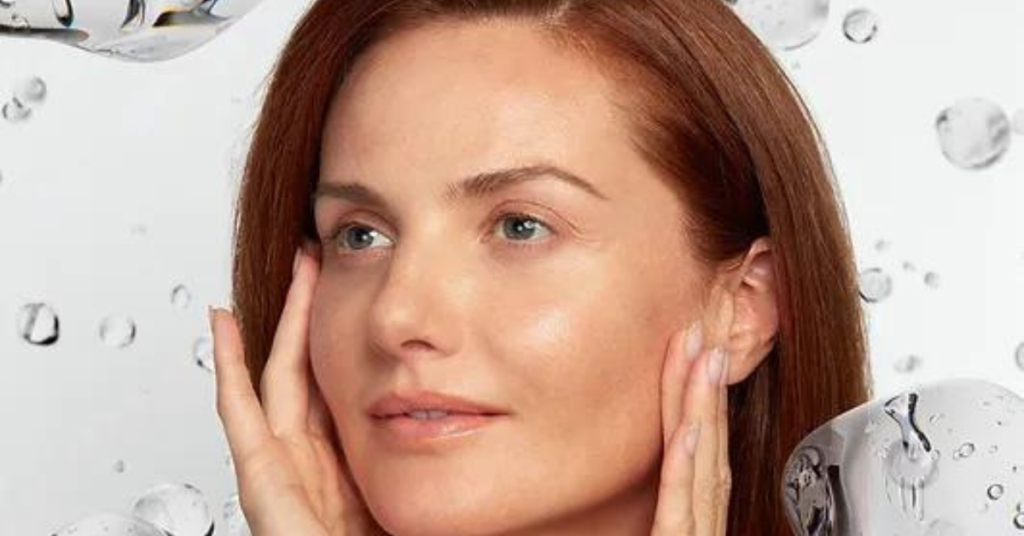
Introduction to Profhilo Structura Profhilo Structura marks a significant advancement in facial aesthetics, providing an innovative solution for restoring lost facial volume and contours. Developed by IBSA Derma, this cutting-edge injectable blends high and low molecular weight hyaluronic acid through the proprietary NAHYCO® Hybrid Technology. This new generation of the renowned Profhilo treatment is specifically designed to target and regenerate superficial facial fat, delivering natural and long-lasting results. What is Profhilo Structura? Profhilo Structura contains 45 mg of low molecular weight hyaluronic acid and 45 mg of high molecular weight hyaluronic acid in a 2 mL syringe. Unlike other hyaluronic acid fillers, it uses NAHYCO® Hybrid Technology to enhance its ability to restore facial volume and contours without chemically cross-linked molecules, resulting in a more natural appearance compared to traditional dermal fillers. Uses of Profhilo Structura Primarily intended for the face, Profhilo Structura is effective in reconstructing and reorienting facial fat to counteract volume loss and support facial bones affected by ageing. The treatment not only restores volume but also improves skin quality, making it firmer and more hydrated. Benefits of Profhilo Structura: – Natural Look: Maintains facial fat tissues for a natural appearance. – Long-lasting Results: Provides extended results, reducing the need for frequent touch-ups. – No Downtime: Requires no recovery time, allowing patients to resume daily activities immediately. – Improves Skin Quality: Enhances skin firmness and hydration alongside its volumising effects. Profhilo vs. Profhilo Structura While both products are developed by IBSA and utilise hyaluronic acid, Profhilo Structura differs from the original Profhilo in several ways: * Higher HA Content: Profhilo Structura contains 90 mg/2 mL compared to Profhilo’s 64 mg/2 mL. * Different Applications: Profhilo acts as an injectable moisturiser and collagen booster, whereas Profhilo Structura targets fat tissue restoration. * Injection Techniques: Tailored to target fat tissue regeneration, enhancing midface projection and reducing hollows and laxity. Profhilo and Profhilo Structura can be used in separate sessions as a combination treatment, providing optimal results by leveraging the strengths of both injectables. Clinical Evidence and Launch Clinical trials of Profhilo Structura have shown impressive results, with 95% of patients noticing significant improvements in the midface area after the first treatment, sustained over three months. This advanced treatment was launched on June 4th in London, marking its European debut nearly a decade after the original Profhilo was introduced by UK and Ireland distributor HA-Derma. ‘Profhilo is a trusted leader in aesthetic medicine,’ says Iveta Vinkler, Sales and Marketing Director at HA-Derma. ‘While fat often carries negative connotations, it’s actually a crucial marker of youth. Our insights into its role in youthful aesthetics are advancing rapidly. The launch of Profhilo Structura equips medical professionals with a natural product tailored to meet the evolving demands of today’s discerning aesthetic clients.’ Conclusion Profhilo Structura is a groundbreaking addition to non-surgical aesthetic procedures, offering a natural and effective method to regain facial volume and shape. Astrum Medical Clinic in London provides both Profhilo and Profhilo Structura treatments, ensuring patients achieve natural results with minimal recovery time. Embrace the future of facial aesthetics with Profhilo Structura, and rediscover a youthful, sculpted appearance.
How Long Do the Effects of Botox Injections Last?
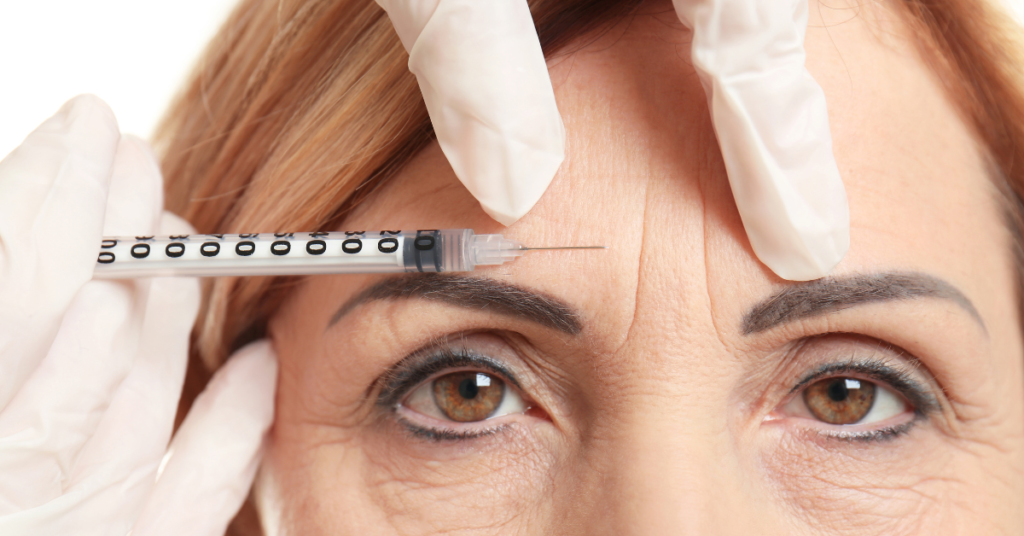
You might not know that the duration of Botox effects can vary greatly from person to person, influenced by factors like your metabolism and lifestyle choices. Typically, you’ll see results lasting between 3 to 4 months, but there’s more to this story. How Botox works, the timeline for initial effects, and the peak period all play vital roles in determining how long you’ll enjoy smoother skin. Understanding these elements can help you make informed decisions about your treatment plan. Curious about how to maximise the longevity of your results? Let’s explore the key aspects together. Key Takeaways – Botox effects typically last 3-4 months before requiring maintenance. – Duration is influenced by individual metabolism, lifestyle, and treated area. – Initial effects appear in 24-48 hours, peaking at 7-14 days. – Regular touch-ups every 3-4 months help maintain desired results. – Healthy habits and proper skin care can prolong Botox effects. Typical Duration of Botox Typically, Botox injections last for about three to four months before their effects begin to wear off. This timeframe can vary based on individual factors like metabolism, lifestyle, and the specific area treated. Regular upkeep is key to sustaining the desired results. By following a consistent maintenance schedule, you can guarantee that your appearance remains smooth and youthful. It’s essential to plan touch-up appointments around the three to four-month mark. These visits help in maintaining the efficacy of the treatment and prevent the reappearance of lines and wrinkles. During these sessions, your provider can assess the current state of your Botox and make any necessary adjustments. Follow-up consultations play a critical role in the overall treatment plan. By scheduling these, you allow your provider to monitor your progress and make treatment adjustments as needed. These consultations ensure that the Botox continues to work effectively for you, providing the best possible results. Incorporating these practices into your routine guarantees that you maximise the benefits of Botox. A well-structured maintenance schedule, coupled with timely touch-up appointments and regular follow-up consultations, will help you maintain your desired appearance consistently. How Botox Works Botox functions by blocking the nerve signals that trigger muscles to contract, thereby diminishing the visibility of wrinkles and fine lines. When administered into specific facial muscles, Botox initiates a temporary muscle paralysis. This muscle immobilisation prevents the muscles from engaging in the repetitive movements that contribute to the development of wrinkles and fine lines over time. For those interested in cosmetic enhancement, Botox provides a significant aesthetic enhancement. By focusing on areas susceptible to dynamic wrinkles, such as the forehead, lines around the eyes, and frown lines between the eyebrows, Botox smoothes out these lines, offering a more youthful appearance. This renders it a sought-after anti-aging solution for individuals aiming to uphold a vibrant and revitalised look. The procedure involves a meticulous evaluation of your facial structure to identify the exact injection points. The goal is to achieve a natural look without compromising facial expressions. It’s not solely about immobilising the muscles, but rather about skillfully moderating their activity to improve your overall appearance. This precise method guarantees you attain the desired cosmetic enhancement, establishing Botox as a dependable option for aesthetic enhancement and an efficient anti-aging remedy. Initial Effects Timeline You’ll start noticing the initial effects of Botox injections within 24 to 48 hours. Typically, you’ll observe a gradual reduction in fine lines and wrinkles as the Botox begins to relax the targeted muscles. During this early period, it’s important to follow any aftercare instructions provided by your healthcare professional to minimise the risk of complications and support the recovery process. Common side effects can include mild swelling, redness, or bruising at the injection sites. These side effects usually subside within a few days. Some individuals may experience slight headaches or a feeling of tightness in the treated areas. If you encounter any severe or persistent side effects, it’s important to contact your healthcare provider immediately. To effectively maintain results, you should consider following touch-up recommendations provided by your practitioner. Regular touch-ups are typically suggested every three to four months to sustain the desired aesthetic outcomes. Consistent follow-ups also help in monitoring your progress and making any necessary adjustments to your treatment plan. By adhering to these guidelines, you can prolong the youthful appearance achieved through Botox and guarantee that any minor side effects are managed promptly and efficiently. Peak Effect Period Reaching its peak effect around 7 to 14 days post-injection, Botox delivers its maximum wrinkle-smoothing benefits during this period. You’ll notice the most significant reduction in fine lines and wrinkles, achieving a refreshed and youthful appearance. This peak period is vital for evaluating how well the treatment aligns with your aesthetic goals. During this time, it’s crucial to assess whether Botox has met your expectations. If you feel certain areas require further refinement, touch up options are available. These minor adjustments can fine-tune the results, making sure you achieve the desired level of cosmetic enhancements. To maintain these best results, establishing a maintenance schedule is key. Most practitioners recommend follow-up treatments every 3 to 4 months. Keeping a consistent schedule helps sustain the wrinkle-reducing effects and prevents the return of fine lines. By sticking to a regular maintenance plan, you guarantee that your aesthetic goals are consistently met. Monitoring your skin’s response during this peak period allows you and your practitioner to make informed decisions about future treatments. This proactive approach guarantees you continually enjoy the benefits of Botox while meeting your long-term cosmetic enhancement objectives. Gradual Decline Phase As the peak effect of the treatment begins to wane, you’ll notice a gradual return of fine lines and wrinkles over the following months. This phase is normal and signifies the slow progression of muscle activity resuming in the treated areas. Your skin elasticity will play a pivotal role during this period, impacting how quickly wrinkles reappear. During the gradual
Is Mole Removal Safe and Effective With Astrum Medical?
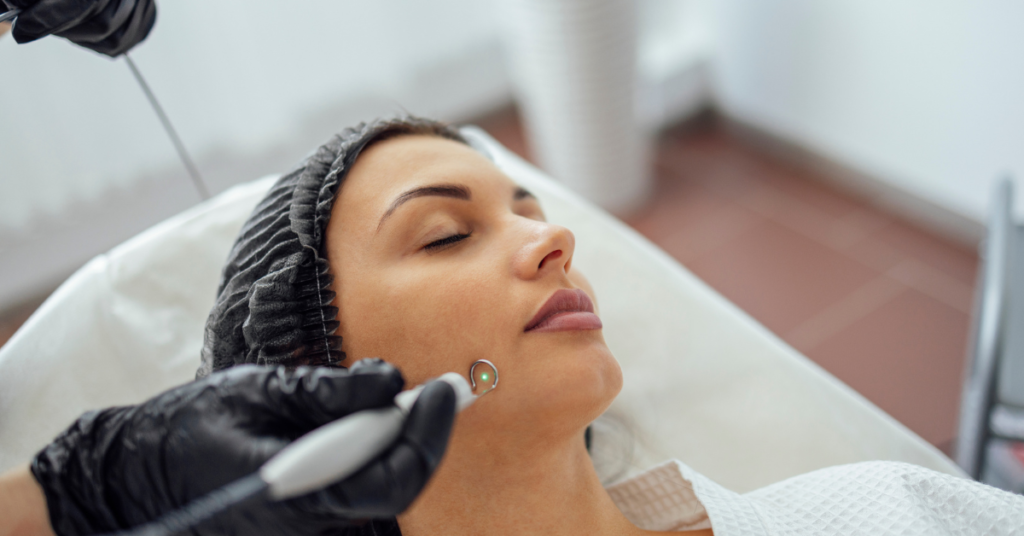
You might not know that Astrum Medical uses some of the most advanced diagnostic tools in the industry for mole removal. Their specialised training and innovative techniques aim to maximise both safety and effectiveness. You’ll find that they prioritise patient comfort through thorough consultations, strict sterilisation measures, and the use of local anaesthesia. But what about their success rates, patient outcomes, and potential risks? To understand how Astrum Medical stands out from other providers and whether their approach is right for you, there’s more you should consider. Key Takeaways – Astrum Medical uses advanced diagnostic tools and minimally invasive techniques for precise and effective mole removal. – Strict safety protocols, including sterilisation and local anaesthesia, ensure a safe procedure at Astrum Medical. – Techniques like laser ablation and cryotherapy promote faster recovery and minimise discomfort. – Over 95% of patients report favourable cosmetic results and minimal scarring post-procedure. – Board-certified dermatologists at Astrum Medical bring extensive experience, enhancing the safety and effectiveness of mole removal. Understanding Mole Removal Understanding mole removal begins with recognising the different types of moles and the medical criteria used to evaluate whether they should be excised. Moles, or nevi, can be congenital or acquired, and they vary considerably in size, shape, and colour. Dermatologists typically assess moles using the ABCDE criteria—Asymmetry, Border irregularity, Color variation, Diameter larger than 6mm, and Evolving characteristics. These factors help determine if a mole is benign or potentially malignant, which informs the decision to remove it. When considering mole removal, you’ll need to weigh both medical and cosmetic concerns. Medically, excision may be necessary to prevent malignancy. Cosmetically, moles in visible areas can affect self-esteem and appearance. The healing process is a critical aspect of mole removal. Post-excision, the wound undergoes a sequence of healing phases: hemostasis, inflammation, proliferation, and maturation. Proper wound care is essential to minimise scarring, which is often a primary cosmetic concern for patients. Evidence-based practices dictate the use of sterile techniques and potential application of topical agents to enhance the healing process. Understanding these facets guarantees you make informed decisions about mole removal, balancing health risks and cosmetic outcomes effectively. Astrum Medical’s Approach Astrum Medical uses a cutting-edge, patient-centred methodology for mole removal, integrating advanced diagnostic tools and minimally invasive techniques to secure best results. By leveraging innovative technology like high-resolution dermoscopy and digital mole mapping, they can accurately assess and monitor moles with exceptional precision. This ensures that only moles requiring removal are targeted, minimising unnecessary procedures and optimising patient outcomes. Their team undergoes specialised training in the latest dermatological advancements and surgical techniques, securing they’re well-equipped to handle complex cases. This rigorous training includes proficiency in laser ablation, radiofrequency excision, and cryotherapy, which are less invasive and promote faster recovery compared to traditional surgical methods. Moreover, Astrum Medical’s clinicians employ state-of-the-art equipment that enhances the efficacy and safety of these procedures. Evidence-based practice is a cornerstone of their approach, securing that each treatment plan is tailored to the specific needs of the patient. By continuously updating their protocols based on the latest research and clinical guidelines, Astrum Medical maintains its commitment to providing high-quality care. This combination of innovative technology and specialised training secures that you receive the most effective and safest mole removal treatment available. Safety Protocols Safety measures at Astrum Medical are carefully crafted to protect patients from potential complications, guaranteeing a safe and efficient mole removal experience. The team prioritises strong safety precautions, starting with a thorough initial consultation. During this phase, your medical history, allergies, and any medications you’re taking are meticulously reviewed. This pre-procedure assessment helps identify any risk factors that could complicate the mole removal process. On the day of the procedure, the medical staff follows strict sterilisation protocols. All instruments are sterilised using cutting-edge autoclaves, and the surgical area is prepared to minimise any risk of infection. Local anaesthesia is administered to ensure your comfort, and the mole removal is conducted under aseptic conditions, significantly decreasing the likelihood of post-procedure complications. Post-procedure care is equally crucial. You’ll receive detailed instructions on wound care, including how to keep the area clean and protected. Follow-up appointments are scheduled to monitor the healing process and address any concerns promptly. This thorough approach to post-procedure care guarantees optimal healing and minimises the risk of infection or scarring. Techniques Used Frequently, mole removal at Astrum Medical employs advanced techniques such as laser therapy, cryotherapy, and surgical excision to guarantee precision and effectiveness. Each method offers unique benefits tailored to the specific characteristics of the mole and the patient’s skin type. Laser Treatment: This technique uses concentrated light energy to break down pigmented cells in the mole. It’s highly precise, minimising damage to surrounding tissue and reducing the risk of scarring. Laser treatment is particularly effective for removing flat or slightly raised moles. Cryotherapy: This method involves freezing the mole with liquid nitrogen, causing the cells to die and fall off. Cryotherapy is ideal for superficial moles and offers a quick, non-invasive solution with minimal discomfort. Surgical Excision: In cases where the mole is large, irregular, or potentially malignant, surgical excision is the preferred technique. This involves cutting out the mole with a scalpel and stitching the area closed. Surgical excision ensures complete removal and allows for histopathological examination. Shave Excision: For raised moles that aren’t deeply rooted, shave excision involves shaving off the mole with a blade. This method is less invasive than full surgical excision and usually requires no stitches. These evidence-based techniques guarantee that mole removal at Astrum Medical is both safe and effective. Expert Opinions Many dermatologists and medical experts agree that the advanced techniques utilised by Astrum Medical guarantee high efficacy and patient satisfaction in mole removal procedures. Leveraging cutting-edge technology and specialised medical expertise, Astrum Medical ensures that each procedure is meticulously executed to maximise outcomes and minimise complications.
Exploring the Benefits of Botox Injections for Wrinkles
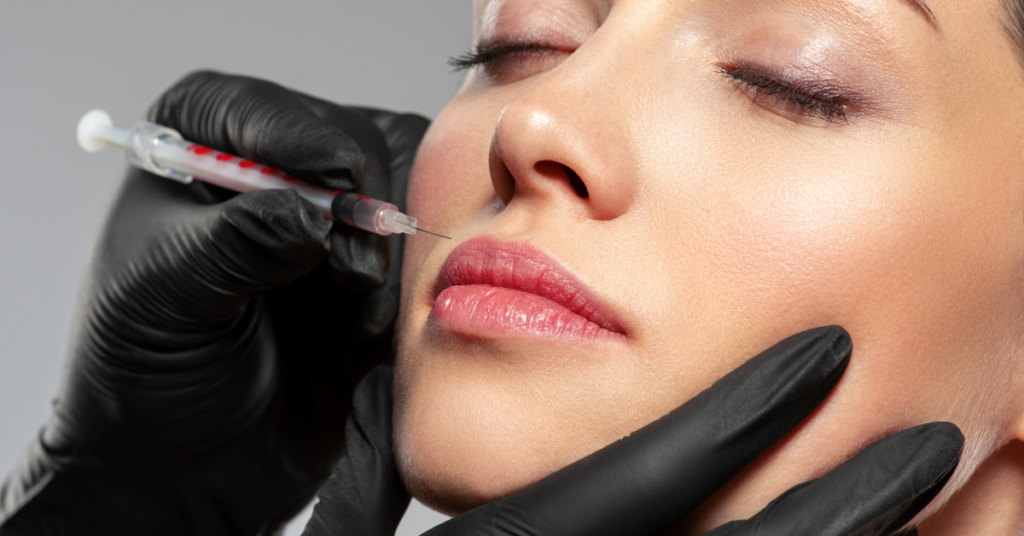
Imagine if you could turn back the clock on your appearance in just a few minutes—Botox injections make that almost a reality. You’ll find that this minimally invasive procedure is not only quick but also delivers immediate, long-lasting results. It’s a safe and cost-effective way to reduce wrinkles, ideal for those with tight schedules. With benefits like preventing new wrinkles and maintaining skin elasticity, you might wonder how else Botox can enhance your skincare routine. Let’s explore the full range of advantages and see if Botox aligns with your anti-aging goals. Key Takeaways of Botox Injections for Wrinkles – Botox offers a minimally invasive solution with quick procedure times and no downtime. – Results are visible within 24 to 48 hours and last 3 to 6 months. – Repeated treatments provide cumulative benefits and sustained wrinkle reduction. – Botox serves as a preventative measure, delaying the formation of new wrinkles. – Procedures are cost-effective and backed by clinical studies for safety and effectiveness. Minimally Invasive Procedure Botox injections are a minimally invasive procedure that involve using a fine needle to inject a small amount of botulinum toxin into targeted muscles. These injections work by temporarily paralyse the muscles, reducing the appearance of wrinkles and fine lines. One of the primary advantages of Botox is its low risk profile. According to clinical studies, adverse effects are rare and usually minor, such as slight bruising or temporary discomfort at the injection site. This makes Botox a safer option compared to more invasive surgical procedures like facelifts, which come with higher risks and longer recovery times. Moreover, being low risk, Botox injections are also cost-effective. When compared to other anti-aging treatments, such as laser therapies or surgical options, Botox offers a more affordable solution. The cost of Botox can vary depending on the area being treated and the number of units required, but overall, it tends to be less expensive and more accessible. Additionally, because the procedure is quick and requires no downtime, you can save both time and money. This combination of low risk and cost-effectiveness makes Botox an appealing option for those looking to reduce wrinkles and rejuvenate their appearance. Quick Treatment Time The procedure typically takes only 10 to 15 minutes, making it a convenient option for those with busy schedules. The time efficiency of Botox injections is one of its most appealing features. You can easily fit a session into your lunch break or between meetings without disrupting your day. This convenience is a significant advantage for professionals who require quick, effective solutions for wrinkle reduction. Pain management during the procedure is straightforward. A topical anaesthetic or ice can be applied to the treatment area to minimise discomfort. Most patients report feeling only a slight pinch, and any discomfort is short-lived. The swift nature of the procedure also means that the recovery time is minimal. You can return to your regular activities almost immediately, with only minor restrictions to follow, such as avoiding strenuous exercise and not rubbing the treated areas for a short period. The combination of a quick treatment time, effective pain management, and minimal recovery time makes Botox a highly efficient option for those seeking to reduce wrinkles. This efficiency and convenience are backed by numerous clinical studies demonstrating the procedure’s safety and effectiveness. Immediate Results One of the most compelling advantages of Botox injections is the near-instantaneous visible improvement in wrinkle appearance. You can typically see noticeable changes within 24 to 48 hours, with full results appearing within a week. This rapid effect provides you with almost immediate gratification, making it an attractive option for those seeking quick aesthetic enhancements. However, it’s vital to understand that Botox is a temporary solution. The effects usually last between three to six months, meaning that maintenance is required to sustain the wrinkle-reducing benefits. Regular follow-up treatments are necessary to keep your skin looking smooth and youthful. While Botox is generally considered safe, you should be aware of potential side effects. Common reactions include mild pain, swelling, or bruising at the injection site. To minimise these risks, proper aftercare is essential. Following your physician’s recommendations, such as avoiding strenuous activities and not touching the treated area, can help ensure the best results and reduce the likelihood of complications. Long-Lasting Effects Leveraging its muscle-relaxing properties, Botox offers long-lasting effects that contribute to sustained wrinkle reduction and improved skin texture. Studies indicate that the effects of Botox can last between three to six months, providing significant anti-aging benefits. This duration allows for fewer treatments over time while maintaining natural-looking results that enhance your overall appearance without the ‘frozen’ look. Botox works by temporarily paralysing the muscles responsible for fine lines and wrinkles, particularly in the forehead, around the eyes, and between the brows. Clinical trials have shown that repeated treatments can lead to cumulative benefits, making subsequent injections even more effective. This long-lasting impact makes Botox a cost-effective choice for those seeking to invest in their appearance without frequent visits to the clinic. Moreover, Botox is a safe procedure when administered by qualified professionals. Its approval by regulatory agencies like the FDA underscores its safety profile. The minimal downtime associated with Botox injections means you can resume your daily activities almost immediately, further enhancing its appeal as a practical anti-aging solution. Preventative Benefits Beyond its long-lasting effects, Botox also offers preventative benefits by inhibiting the formation of new wrinkles. When injected, Botox temporarily paralyses the facial muscles responsible for expressions that cause wrinkles, such as frowning or squinting. This muscle relaxation prevents the skin from creasing, thereby reducing the likelihood of new wrinkle formation. By integrating Botox into your skincare routine early, you can effectively delay the visible signs of ageing. Here are four key preventative benefits of Botox: Skin Rejuvenation: Botox promotes smoother skin texture by reducing muscle activity, leading to noticeable skin rejuvenation over time.
How Do Facial Fillers Enhance Your Natural Beauty?
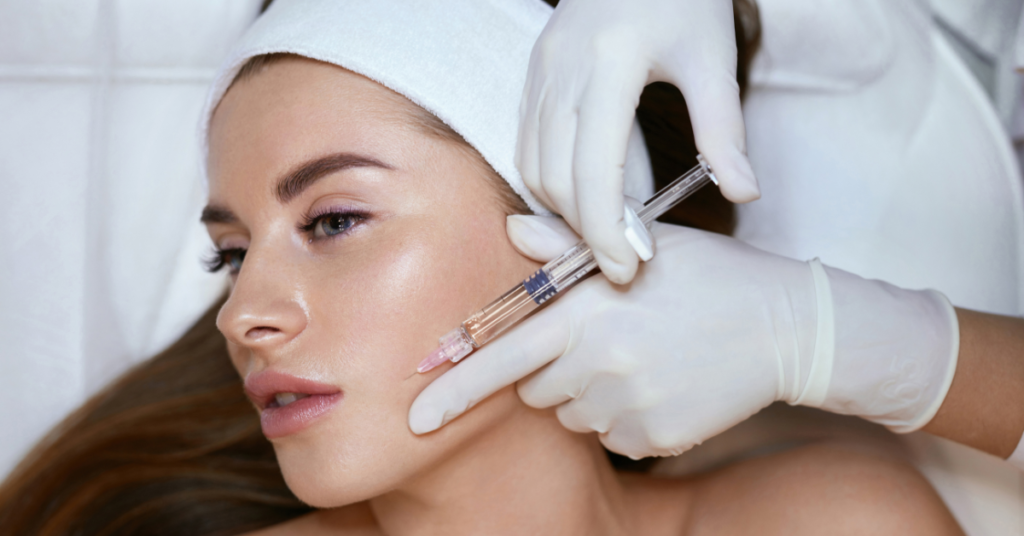
Imagine your face as a canvas, and facial fillers (dermal fillers) as the artist’s brush, subtly enhancing the masterpiece. You might wonder how these treatments can rejuvenate your appearance without looking artificial. By restoring volume, smoothing fine lines, and contouring facial features, dermal fillers offer a way to highlight your natural beauty. They work by stimulating collagen production, leading to a refreshed, more youthful look. Curious about how this process unfolds and the benefits it brings? Let’s explore the nuances and see how choosing the right filler can make all the difference. Key Takeaways – Restore facial volume and smooth out fine lines and wrinkles. – Hydrate and plump the skin, enhancing a youthful appearance. – Stimulate collagen production for long-term skin health. – Provide immediate results with minimal downtime. – Tailored treatments ensure natural-looking enhancements. Understanding Dermal Facial Fillers Dermal fillers, often used in cosmetic dermatology, are injectable substances designed to restore volume and enhance facial contours. When used correctly, they can provide natural results that greatly contribute to a more youthful appearance. These fillers work by addressing volume loss, which is a common sign of ageing, as well as smoothing out fine lines and wrinkles. You’ll find that dermal fillers are composed of biocompatible substances, meaning they integrate seamlessly with your body’s tissues. This guarantees that the enhancements look and feel natural. Clinical studies have shown that patients experience not only physical improvements but also increased self-confidence due to their rejuvenated appearance. Administering dermal fillers involves precision and an understanding of facial anatomy. It’s important to consult a qualified practitioner to achieve optimal, natural-looking results. They’ll tailor the treatment to your specific needs, ensuring the filler is placed in the right areas to restore youthful fullness and symmetry. Evidence supports that, when properly applied, dermal fillers can effectively enhance your natural beauty, offering results that are both subtle and transformative, without appearing overdone or artificial. Types of Dermal Fillers Several varieties of dermal fillers are accessible, each designed to target specific concerns and areas of the face. Hyaluronic acid fillers, like Juvederm and Restylane, are renowned for their capacity to add volume and hydration, making them ideal for addressing nasolabial folds, marionette lines, and enhancing lip fullness. Calcium hydroxylapatite fillers, such as Radiesse, offer a more significant lift and are particularly effective in shaping the jawline and cheeks. Poly-L-lactic acid fillers, such as Sculptra, stimulate collagen production, providing gradual volumization and long-lasting results. Selecting the appropriate filler options depends on the specific aesthetic goals and areas requiring treatment. For example, hyaluronic acid fillers are preferred for their reversibility and biocompatibility, while calcium hydroxylapatite fillers are favoured for their longevity and natural-looking results. Each type of filler requires distinct injection techniques to ensure ideal placement and effectiveness. Linear threading, serial puncture, and fanning are common methods used by clinicians to achieve precise results. Understanding these different filler options and the corresponding injection techniques will allow you to make informed decisions about your treatment plan, guaranteeing that the chosen approach aligns with your beauty enhancement goals. How Dermal Fillers Work Understanding the mechanisms behind dermal fillers involves recognising how these substances interact with skin tissues to restore volume and smooth wrinkles. Dermal fillers typically contain ingredients like hyaluronic acid, calcium hydroxylapatite, and poly-L-lactic acid. These filler ingredients work by mimicking naturally occurring substances in your skin, providing immediate volume and promoting collagen production over time. The injection process begins with a detailed consultation to assess your facial anatomy and aesthetic goals. During the procedure, a fine needle or cannula is used to deliver the filler ingredients into targeted areas. The precision of the injection process is vital, as it determines the even distribution of the filler and the natural look of the final result. The healthcare provider will skillfully navigate under the skin, ensuring minimal discomfort and best placement. Your body’s response to the filler ingredients is also a key factor. Hyaluronic acid-based fillers attract water molecules, hydrating your skin and creating a plump, youthful appearance. Over time, these fillers stimulate collagen production, which helps maintain the skin’s elasticity and structure. Understanding these processes helps you appreciate how dermal fillers can enhance your natural beauty effectively and safely. Benefits of Dermal Fillers You’ll find that the primary benefit of dermal fillers lies in their ability to offer immediate and noticeable improvements in facial volume and contour. By restoring lost volume, dermal fillers effectively enhance your youthful appearance and deliver natural results. These non-surgical treatments operate by injecting hyaluronic acid or other biocompatible substances beneath the skin, which compensates for the natural decline of collagen and elastin due to ageing. Another significant advantage of dermal fillers is their potent anti-aging effects. As we age, our skin loses elasticity and volume, leading to wrinkles and sagging. Dermal fillers can target these specific areas, smoothing out lines and providing a lift to sagging skin. This process not only rejuvenates your appearance but also maintains the natural expressions of your face, ensuring you don’t look ‘overdone.’ Moreover, the minimally invasive nature of dermal fillers means there’s little to no downtime. You can resume your daily activities almost immediately after the procedure. Clinical studies have shown that the benefits can last anywhere from six months to over a year, depending on the type of filler used and individual factors. Therefore, dermal fillers provide a reliable and effective solution for those seeking to enhance their natural beauty. Treatment Process The treatment process for dermal fillers begins with a thorough consultation where a qualified practitioner assesses your facial structure and discusses your aesthetic goals. During this initial meeting, they’ll evaluate your skin type, facial anatomy, and areas of volume loss to create a personalised treatment plan. On the day of the procedure, the practitioner will employ specific injection techniques tailored to your needs. These techniques guarantee precise placement of the filler
What Makes Jawline Fillers a Popular Choice for Facial Sculpting?
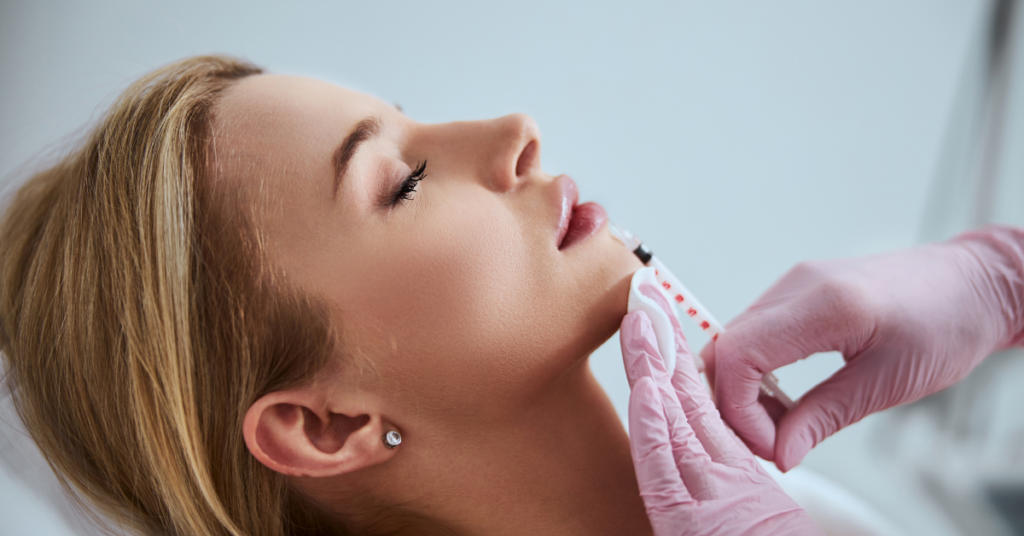
It’s no coincidence that just as you start considering ways to enhance your facial features, jawline fillers are gaining popularity for facial sculpting. You might wonder why these fillers have become the go-to option for many. Their non-invasive nature, quick results, and minimal downtime are just the beginning. Imagine achieving a more defined jawline without surgery, thanks to hyaluronic acid-based injectables that offer both safety and effectiveness. But there’s more to this trend that could change your perspective on facial rejuvenation entirely. Key Takeaways – Non-invasive hyaluronic acid fillers offer a safe, quick, and economical alternative to surgery. – Immediate improvements in facial contours and jawline definition post-injection. – Minimal downtime with rapid recovery and limited aftercare requirements. – Correction of facial asymmetries enhances overall attractiveness and boosts self-esteem. – Long-lasting effects with high patient satisfaction and increasing demand for a youthful appearance. Non-Invasive Procedure You’ll find that jawline fillers offer a non-invasive procedure, utilising hyaluronic acid-based injectables to enhance facial contours with minimal downtime. This method leverages the biocompatibility of hyaluronic acid, a naturally occurring substance in the skin, making it a safe and effective option for facial augmentation. The procedure itself is remarkably quick, often taking less than an hour from start to finish. This rapidity not only minimises disruption to your daily routine but also reduces the likelihood of significant side effects or complications. From a cost perspective, jawline fillers present an economical option compared to surgical alternatives such as implants or facelifts. The affordability stems from the lower overheads of non-surgical procedures, which don’t require operating room facilities or general anaesthesia. Clinically, hyaluronic acid fillers have shown to offer durable, yet reversible results, allowing for ongoing adjustments to achieve the desired aesthetic. Moreover, the utilisation of fine-gauge needles and advanced injection techniques minimises discomfort and maximises precision. This precise application ensures a balanced enhancement of the jawline, contributing to a more defined and youthful facial profile. Immediate Results Patients often notice instant results following jawline filler injections, with improved facial contours visible right after the procedure. This quick transformation is one of the primary reasons why jawline fillers have become highly sought after in facial sculpting. The procedure utilises hyaluronic acid-based fillers, which not only provide volume but also stimulate collagen production. Right from the moment the procedure is completed, you’ll observe subtle changes that contribute to a more defined and sculpted profile. This instant gratification appeals to those seeking rapid improvements without undergoing invasive surgery. Clinical studies reveal that most patients experience a significant enhancement in their jawline definition immediately post-injection, attributing to the filler’s ability to add structure and support to the facial tissues. The immediate results can be attributed to the precise placement of the filler along the mandibular border, enhancing both the anterior and posterior jawline contours. This precision ensures that even minor adjustments can yield substantial improvements in overall facial aesthetics. Real-time feedback during the procedure allows for optimal sculpting, making it easier to tailor the results to your specific anatomical needs and aesthetic goals. Thus, jawline fillers offer a scientifically validated, swift route to achieving a refined and youthful appearance. Minimal Downtime One of the most compelling benefits of jawline fillers is the limited recovery time associated with the procedure. When you undergo this treatment, you’ll find that the process itself is remarkably efficient. The use of advanced, painless injections guarantees that discomfort is minimised, allowing you to return to your daily activities almost immediately. Clinicians employ fine-gauge needles and hyaluronic acid-based fillers, which are biocompatible, reducing the risk of adverse reactions. Scientific studies indicate that patients often experience a rapid recovery, typically marked by mild swelling or redness that subsides within a few hours to a couple of days. Unlike surgical options, which may require weeks of recovery, jawline fillers let you see improvements without significant interruption to your schedule. Patients frequently report satisfaction with the procedure’s convenience, especially given the increasing demand for non-invasive aesthetic solutions. The limited recovery time also means that you won’t need extensive aftercare. Basic post-procedural guidelines often include avoiding strenuous activities for 24 hours and refraining from touching the treated area. Following these simple steps can help maintain the results and contribute to a smooth recovery. Essentially, the limited recovery time enhances the appeal of jawline fillers, making them a practical choice for facial sculpting. Enhanced Facial Symmetry Enhanced facial symmetry achieved through jawline fillers offers a scientifically-backed approach to balancing facial proportions and improving overall aesthetics. When you undergo this non-surgical treatment, specialists use advanced contouring techniques to create a harmonious aesthetic balance that aligns with contemporary beauty standards. Symmetrical features are often equated with attractiveness, and jawline fillers provide a precise method for enhancing this symmetry. Utilising hyaluronic acid-based fillers, experts can target specific areas along your jawline to correct asymmetries, providing a more balanced facial structure. Studies have shown that symmetrical faces are more likely to be perceived as beautiful, highlighting the importance of achieving equilibrium in facial proportions. By precisely injecting fillers, practitioners can sculpt and redefine your jawline, ensuring that both sides of your face mirror each other more closely. In clinical practice, these contouring techniques are tailored to your unique facial anatomy, which means the results are both natural-looking and effective. Enhancing facial symmetry not only meets prevailing beauty standards but also contributes positively to your self-esteem and overall confidence. This evidence-based approach underscores the growing popularity of jawline fillers in modern aesthetic medicine. Restored Volume In addition to enhancing facial symmetry, jawline fillers play a pivotal role in restoring lost volume, which is integral to achieving a youthful and rejuvenated appearance. As you age naturally, you lose subcutaneous fat and collagen, leading to a hollow or sunken look. Jawline fillers, typically composed of hyaluronic acid or other biocompatible materials, effectively counteract these effects by replenishing volume and providing structural
Are Dermal Fillers the Secret to Youthful Skin?
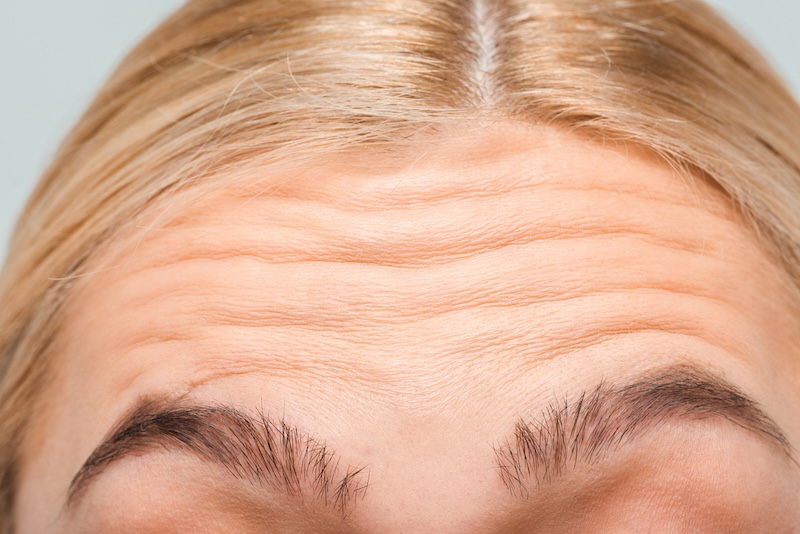
Imagine waking up to a reflection that defies the passage of time—could wrinkle fillers (dermal fillers) be your answer? You’ve likely heard about their ability to restore volume, smooth lines, and enhance contours with minimal downtime. But are they truly the secret to youthful skin, or just a temporary fix? Understanding how these fillers work, what they’re made of, and weighing their benefits against potential risks can help you make an informed decision. So, let’s explore whether these modern marvels hold the key to lasting youth, or if there’s more to ponder. Key Takeaways – Dermal fillers instantly restore facial volume and smooth fine lines, contributing to a youthful appearance. – Hyaluronic acid in fillers enhances hydration and collagen production, improving skin elasticity and texture. – Results from dermal fillers are immediate with minimal downtime, making them a convenient anti-aging solution. – Periodic touch-ups are required to maintain the youthful effects of dermal fillers, ensuring long-term skin rejuvenation. – Professional consultation ensures personalised treatment plans, optimising the benefits and minimising risks of dermal fillers. Understanding Wrinkle Fillers Understanding dermal fillers requires a thorough look at their composition, functionality, and the science behind their effectiveness in restoring youthful skin. Dermal fillers are primarily composed of substances like hyaluronic acid, calcium hydroxylapatite, and poly-L-lactic acid. These compounds have been meticulously studied for their roles in skin rejuvenation and as effective anti-aging solutions. Hyaluronic acid, for instance, is a naturally occurring substance in your skin that retains moisture, providing plumpness and hydration. Scientific research shows that when injected, it integrates with your skin tissue, replenishing lost volume and smoothing out wrinkles. Calcium hydroxylapatite, another filler component, stimulates collagen production, which is essential for maintaining skin’s elasticity and firmness. Poly-L-lactic acid works by gradually encouraging your skin to produce more collagen over time. This extended process leads to a more natural and enduring transformation. Studies have demonstrated that these fillers aren’t only effective but also safe when administered by qualified professionals. How Dermal Fillers Work When you receive a dermal filler injection, the active compounds immediately start interacting with your skin’s underlying structures to restore volume and smooth out wrinkles. These fillers, often containing hyaluronic acid or other biocompatible substances, integrate seamlessly with your skin’s extracellular matrix. This process promotes skin rejuvenation by stimulating collagen production and enhancing hydration. Filler effectiveness varies depending on the type of filler used and the target areas. Typically, you can expect: – Immediate results with minimal downtime. – Enhanced plumpness and elasticity. – Reduction in fine lines and deep wrinkles. – Improved facial contours. The longevity of dermal fillers is another vital factor. While some fillers last between six to twelve months, others can maintain their effects for up to two years. However, individual results may vary based on factors like age, skin type, and the specific formulation used. To sustain the youthful appearance, periodic maintenance treatments are often required. Medical studies support the safety and efficacy of dermal fillers for achieving significant skin rejuvenation. These treatments are minimally invasive and can be tailored to meet individual aesthetic goals. By understanding the mechanisms behind dermal filler effectiveness, you can make informed decisions about your skin’s long-term health and beauty. Types of Wrinkle Fillers (Dermal Fillers) Among the various types of dermal fillers, hyaluronic acid-based fillers are the most commonly used due to their proven efficacy and safety profile. Hyaluronic acid, a naturally occurring substance in your skin, attracts water, providing hydration and volume. Popular brands like Juvéderm and Restylane have set high standards, offering various formulations tailored for different facial areas and purposes. Calcium hydroxylapatite fillers, such as Radiesse, provide another option, particularly effective for deeper wrinkles and volume loss. Composed of calcium and phosphate ions, these fillers promote collagen production, offering longer-lasting results. Poly-L-lactic acid fillers, like Sculptra, are bio-stimulatory agents that work gradually by stimulating collagen synthesis. These fillers are ideal for patients seeking a natural, gradual improvement. The injection process varies slightly depending on the filler type. Generally, a fine needle or cannula is used to inject the filler into targeted areas. The procedure typically involves minimal discomfort, thanks to the inclusion of lidocaine in many formulations. Benefits of Dermal Fillers Dermal fillers offer a myriad of benefits, including the immediate restoration of facial volume, smoothing of fine lines and wrinkles, and enhancement of natural contours, all of which contribute to a more youthful appearance. When it comes to skin rejuvenation, dermal fillers provide long lasting results, making them a popular choice for those seeking non-surgical aesthetic improvements. The use of hyaluronic acid-based fillers, for instance, enhances hydration and stimulates collagen production, which further augments the skin’s natural looking, youthful appearance. Clinical studies have shown that patients experience significant improvements in skin texture and elasticity post-treatment. Here are some key benefits of dermal fillers: – Immediate Results: Noticeable improvements are often visible right after the procedure. – Minimal Downtime: Most treatments require little to no recovery time, allowing you to resume daily activities swiftly. – Customisable Treatments: Fillers can be tailored to address specific concerns, from volume loss to fine lines. – Long Lasting Results: Depending on the type of filler used, results can last from several months to over a year. Risks and Side Effects While dermal fillers are generally safe, they do carry some risks and possible side effects that you should be aware of before undergoing treatment. Common reactions can include redness, swelling, and bruising at the injection site. These typically resolve within a few days. However, more serious potential complications can arise, such as infection, granulomas (small lumps under the skin), and vascular occlusion, where the filler inadvertently blocks a blood vessel. Safety concerns also extend to the long-term effects of dermal fillers. Over time, the repeated use of fillers can lead to skin stretching or irregularities in facial contours. Some
Can Jawline Fillers Give You a More Defined Facial Contour?
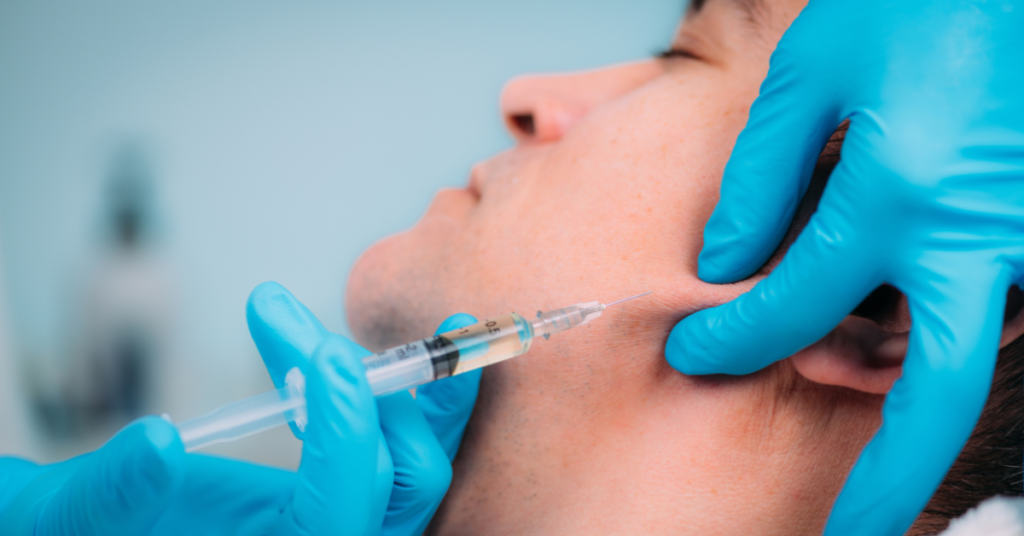
Are you curious if jawline fillers can really give you that coveted, more defined facial contour? This non-invasive treatment promises immediate results, enhancing facial symmetry and creating a sharper angle between your jaw and neck. By adding volume and structure, fillers offer a sculpted and youthful appearance without the need for surgery. But how do these fillers actually work, and what should you expect during and after the procedure? Understanding the nuances of jawline fillers might be the key to deciding if this popular treatment is right for you. Key Takeaways – Jawline fillers enhance facial contours by adding volume and structure for a more sculpted appearance. – Hyaluronic acid, calcium hydroxylapatite, and poly-L-lactic acid fillers offer varying durations and effects on facial definition. – The procedure provides immediate results, with full effects visible within 1-2 weeks. – Facial symmetry and a youthful appearance are key benefits of jawline fillers. – Adhering to aftercare guidelines ensures optimal outcomes and prolonged filler longevity. Understanding Jawline Fillers Jawline fillers, typically composed of hyaluronic acid or other dermal filler substances, are injected into the jaw area to enhance and define facial contours. These fillers work by adding volume and structure, thereby creating a more sculpted appearance. You have several filler options to choose from, each with varying properties and durations. Hyaluronic acid-based fillers are popular due to their biocompatibility and reversibility. Other options include calcium hydroxylapatite and poly-L-lactic acid, each offering unique benefits. After receiving jawline fillers, maintenance tips are essential for best results. Avoid strenuous activities and excessive facial movements for at least 24-48 hours post-treatment. This helps the filler settle properly and reduces the risk of complications. Incorporating post-treatment exercises, such as gentle facial massages, can also help achieve a smoother contour. The results timeline varies depending on the filler used and individual metabolic rates. Generally, you’ll see initial results immediately, with full effects becoming evident within 1-2 weeks. Regular follow-up treatments are recommended to maintain the desired look, as most fillers gradually metabolise over 6-18 months. Understanding these aspects guarantees you achieve and maintain a defined facial contour effectively. Types of Fillers Used When considering jawline fillers, you’ll find several types available, each with distinct properties tailored to different aesthetic needs. Hyaluronic acid (HA) fillers, such as Juvederm and Restylane, are popular due to their natural compatibility with the body and reversible nature. Calcium hydroxylapatite (CaHA) fillers, like Radiesse, provide a firmer structure and longer duration, making them suitable for more pronounced contouring. Poly-L-lactic acid (PLLA) fillers, including Sculptra, stimulate collagen production, offering gradual and natural enhancement over time. Selecting the right filler options depends on your specific goals and the desired longevity of the results. HA fillers typically last 6-12 months, while CaHA fillers can last up to 18 months. PLLA fillers may require multiple sessions but can provide results lasting over two years. The injection process is essential for achieving best results. It involves precise placement of the filler along the jawline to enhance definition and symmetry. A skilled practitioner will assess your facial structure and use advanced techniques to ensure even distribution and natural-looking outcomes. Understanding the different filler options and the intricacies of the injection process is key to achieving a more defined and aesthetically pleasing jawline. How Jawline Fillers Work By understanding the mechanisms of jawline fillers, you can better appreciate how they enhance facial contours and achieve a more defined appearance. Jawline fillers typically involve hyaluronic acid or calcium hydroxylapatite, substances that are biocompatible and promote facial symmetry. When strategically injected, these fillers add volume and structure to the jawline, instantly improving jawline definition. The precision of filler placement is vital. It ensures that the added volume harmonises with your natural facial anatomy, maintaining balance and proportion. This meticulous approach not only enhances the contours of your jawline but also contributes to overall facial symmetry. The injection sites are carefully selected to target areas where volume loss or sagging has occurred, thereby restoring a youthful and well-defined appearance. Filler longevity varies depending on the type of filler used and individual metabolic factors but generally ranges from 12 to 24 months. This durability allows for sustained enhancement without frequent touch-ups. Clinical studies support the efficacy and safety of these fillers, showing significant improvements in jawline definition and patient satisfaction. Benefits of Jawline Fillers Enhancing facial contours through jawline fillers offers numerous benefits, including improved facial symmetry, a more youthful appearance, and increased self-confidence. By precisely targeting the jawline, fillers can effectively enhance your profile, creating a balanced and harmonious look. Clinical studies have shown that hyaluronic acid-based fillers can provide immediate, yet natural-looking results that enhance facial symmetry. One of the key advantages is the long-lasting results these fillers offer. While the duration can vary depending on the type of filler used, many patients enjoy the effects for up to 12-18 months. Regular maintenance treatments can extend these results even further, ensuring sustained improvement and satisfaction. In addition, jawline fillers can help redefine the contours of the lower face, which often lose definition with ageing. This redefining effect can contribute to a more youthful appearance, as sharper and more defined jawlines are often associated with youth and importance. Moreover, achieving a well-contoured jawline can greatly boost self-esteem, as it aligns with cultural and aesthetic standards of beauty. Procedure Overview Undergoing jawline filler treatment involves a carefully planned procedure conducted by a qualified medical professional to achieve best outcomes and patient safety. Initially, you’ll have a consultation to discuss your aesthetic goals and evaluate your facial structure. This helps your provider determine the most suitable filler options for achieving optimal contouring results. The procedure begins with cleansing the treatment area and applying a topical anaesthetic to minimise discomfort. Your provider will then strategically inject the chosen dermal filler into specific points along your jawline. Common filler options include hyaluronic acid-based
Are Dermal Fillers the Right Solution for You?
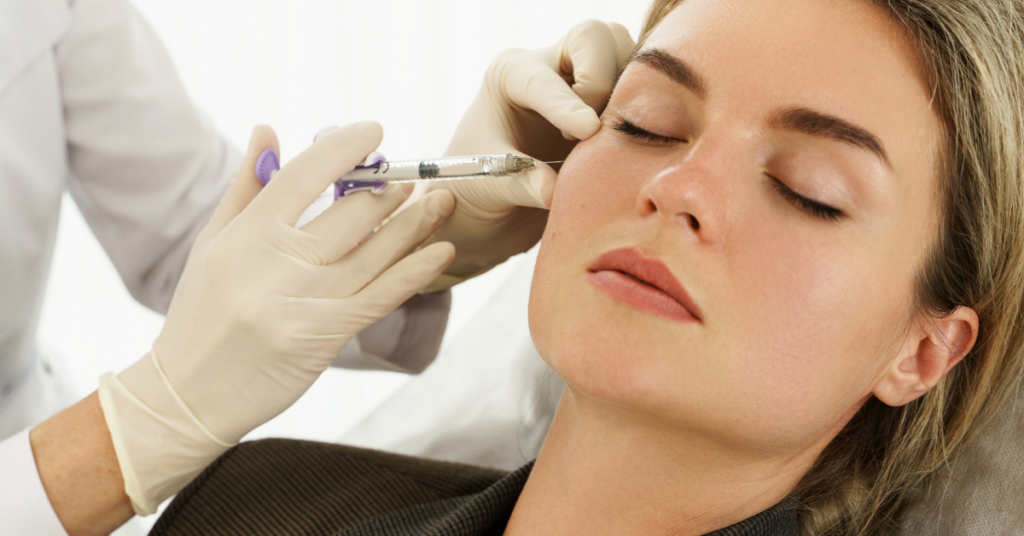
Considering a little touch-up can be a sensitive decision, so it’s vital to think about whether dermal fillers are the right choice for you. You might be drawn to the immediate, natural-looking results with minimal downtime, but it’s essential to weigh the types of fillers, potential risks, and long-term maintenance. Are you comfortable with injections and the need for periodic treatments? Consulting with a skilled practitioner to discuss your medical history, preferences, and expectations can make all the difference. So, how do you know if dermal fillers align with your aesthetic goals and lifestyle? Key Takeaways – Dermal fillers offer immediate, natural-looking results with minimal downtime. – Various types of fillers cater to different needs, from temporary to long-lasting solutions. – Recovery is typically quick, with mild swelling and redness being common temporary side effects. – Consulting a qualified practitioner ensures treatment suitability and addresses any medical history concerns. – Budgeting for periodic touch-ups is essential due to the non-permanent nature of dermal fillers. What Are Dermal Fillers? Dermal fillers, also known as soft tissue fillers, are injectable substances used to restore volume, smooth lines, and enhance facial contours. If you’re considering dermal fillers, understanding the cost considerations is essential. Prices can vary significantly based on the type of filler used, the amount required, and the geographical location of your provider. An initial consultation process will help you determine the exact cost tailored to your needs. In terms of effectiveness, dermal fillers offer immediate results, but their longevity varies. Hyaluronic acid fillers generally last 6-12 months, while other types might last longer. Comparing the effectiveness of different fillers can help you choose the best option for your desired outcome. During your consultation, a qualified professional will discuss the various types and their respective benefits. Maintenance requirements are another vital factor. Dermal fillers aren’t permanent, so periodic touch-ups are necessary to maintain your results. The frequency of these touch-ups depends on the type of filler and individual metabolic factors. Your provider will create a maintenance plan during the consultation process, ensuring that you understand the commitment involved and can make an informed decision about whether dermal fillers are the right solution for you. Types of Dermal Fillers Among the types of dermal fillers, hyaluronic acid fillers are the most popular due to their versatility and biocompatibility. They come in different formulations designed for various purposes, from fine line reduction to volumeizing deeper facial contours. These fillers can be tailored to meet your specific aesthetic needs, making them an ideal choice for many patients. Another notable type is calcium hydroxylapatite fillers, which are known for their longer-lasting results and ability to stimulate collagen production. Poly-L-lactic acid fillers also promote collagen synthesis, offering a gradual and natural-looking improvement over time. Additionally, polymethylmethacrylate (PMMA) fillers provide a more permanent solution with microspheres that remain under the skin, offering long-term support. Understanding the correct injection techniques is essential for best outcomes. Superficial injections are typically used for fine lines, while deeper injections are reserved for volumeizing and contouring. The choice of injection technique often depends on the filler type and the area being treated. For example, hyaluronic acid fillers might be injected using a linear threading or serial puncture technique, while calcium hydroxylapatite might require a more robust, deeper injection approach. Selecting the appropriate filler and mastering the injection technique are essential steps to achieving the most favourable results tailored to your unique facial structure and aesthetic goals. Benefits of Dermal Fillers Understanding the different kinds and methods of dermal fillers provides a strong foundation for appreciating their numerous advantages, including immediate results, minimal downtime, and the capacity to address a wide range of cosmetic concerns. When you choose dermal fillers, you can expect to see changes almost right away. This is particularly beneficial for individuals seeking quick enhancement of facial volume, reduction of fine lines, or contouring of facial features. Dermal fillers are non-invasive, meaning they require no surgical intervention. This notably reduces recovery time, allowing you to resume your daily activities almost instantly. The procedures are typically quick, often completed within an hour, making them convenient for those with busy schedules. Another noteworthy benefit is the long-lasting results. Depending on the type of filler and the area treated, the effects can last from several months to over a year. This duration, combined with the natural-looking outcomes, makes dermal fillers an appealing option for many. Their ability to blend seamlessly with the existing facial structure ensures that enhancements appear subtle and authentic, rather than artificial. Risks and Side Effects Often, individuals may experience temporary side effects such as swelling, redness, or bruising at the injection site. These symptoms usually resolve within a few days and are generally mild. However, it’s crucial to be mindful of common misconceptions regarding dermal fillers. Many people believe these side effects indicate a problem, but they’re typically just the body’s natural response to the injection process. Before undergoing treatment, you should take specific precautions to minimise risks. Confirm your practitioner is licensed and experienced, as this markedly reduces the likelihood of potential complications. Although rare, complications like infections, granulomas, or vascular occlusion can occur. These severe side effects necessitate immediate medical intervention. Allergic reactions are another concern, though they’re uncommon. Most modern dermal fillers are made from hyaluronic acid, a substance naturally found in the body, which diminishes the risk of allergies. However, a thorough medical history and consultation are essential to pinpoint any potential allergens. Procedure Overview A typical dermal filler procedure involves a thorough facial evaluation, precise injection method, and post-treatment care to secure best results and patient safety. Initially, your healthcare provider will conduct a detailed facial evaluation to pinpoint areas requiring enhancement or volume restoration. This step is crucial as it informs the choice of filler and guarantees a balanced, natural look. Next, the injection process begins with the



